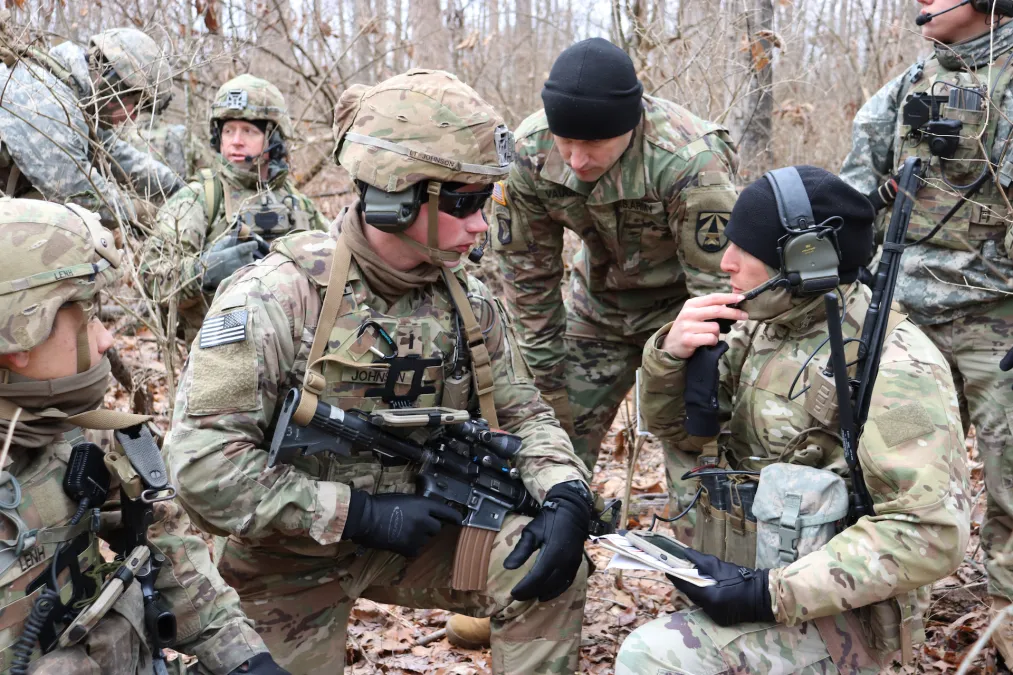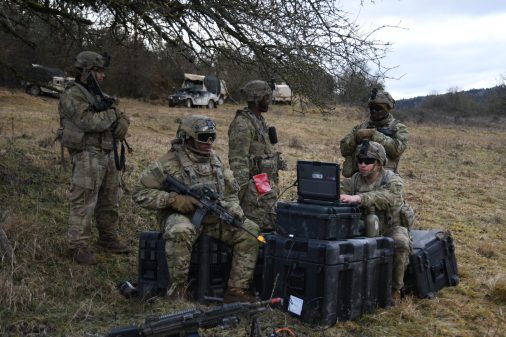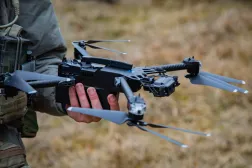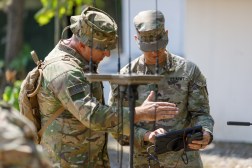Signature management is key tenet of Army’s digital transformation

AUGUSTA, Ga. — One of the Army’s guiding principles for its digital transformation is ensuring units maintain a low or reduced signature in the electromagnetic spectrum.
One of the the service’s major takeaways from Russia’s 2014 invasion of Ukraine, was Russian forces’ ability to locate Ukrainian command posts and fire upon them, just based on their electronic signatures.
The Army’s Russia New Generation Warfare study in 2017 spurred several modernization efforts still ongoing today to improve signature management, reduce the size and complexity of command posts, and develop better electronic countermeasures and jamming capabilities.
The service has continued on this modernization effort, renewed by observations in Ukraine’s current conflict with Moscow as well as the sophisticated capabilities of other top competitors such as China.
The goal is to be able to hide in plain sight, leaders have said, which means relying on new technologies and tactics that make units harder to detect in the spectrum, but not hamper their ability to get their jobs done.
“We have got to build a network that is hard to find, that it’s hard to target,” Mark Kitz, program executive officer for command, control, communications-tactical, told DefenseScoop at the TechNet Augusta conference.
The Army wants to tailor certain technological options and concepts based on particular units and the environment they will be operating in. But in order to do that effectively, they must understand what they look like in the spectrum.
“We also have to see ourselves. We also have to understand when we turn on jammers, we have to understand our own network and our own environment,” Kitz said.
A “commander is going to have to make decisions about what parts of the network he’s going to want to enable and what parts of the network he’s going to want to obfuscate,” he added. “Every commander is going to have to make those decisions, because each fight, each snippet of spectrum is going to look so different.”
For example, disaster relief responses will likely be conducted in a more permissive environment allowing commanders to rely on digitally louder technologies such as 5G. However, a GPS-denied environment, Kitz noted, means spectrum will immediately be contested.
“I think the Army has to embrace that each operational environment, the future spectrum is going to potentially look very different,” Kitz said. “Each commander is going to have to make hard decisions about spectrum, signature reduction efforts, and having the thickened capacity that he needs to run his network.”
The signature management issue spans across Army program executive offices. And to allow the Army to see itself in the spectrum, a program will be coming online next year with PEO Intelligence, Electronic Warfare and Sensors called Spectrum Situational Awareness System (S2AS), he noted.
This effort is a commercial-off-the-shelf solution that will provide sensing and visualization of what units look like in the spectrum.
Army units are beginning to baseline their signatures. During a recent operational assessment in Germany, a unit collected what its signature looked like.
Additionally, when units go to the combat training centers for their validation exercises, they’re now starting to ensure some type of baseline as a means of understanding what a normal output might look like to inform their signature management.
“What I’ve seen out of the [combat training centers] is they are starting to collect what the signatures look like of the” command posts, Col. Shermoan Daiyaan, project manager for tactical radios at C3T, told DefenseScoop. “They don’t really have a baseline. I’ve seen some heat maps that showed a signature within CPs from the CTC rotations. We don’t know if it was high or low, or if that’s good or bad. They’re starting to build that type of capability to see themselves, and we got to get there.”
Daiyaan added that commanders are now starting to make decisions on who can talk on a radio because once anyone in a unit pushes that button, they radiate in the spectrum and can be found by the enemy.
“I had one commander would put it to me this way: He says, ‘Shermoan I’m asking myself, who should be authorized to squelch the hand mic on a radio?’ He’s saying, ‘I’m making it an O-6 decision on who should hit a mic on a radio … because I want to hide in plain sight,’” Daiyaan said.
Kitz explained that the program office wants to be able to tailor capabilities to those commanders’ specific needs.
“If a commander is so worried about just keying a mic, that’s a very different operational environment than we encountered in Afghanistan or encounter today,” he said. “I think tailoring that infrastructure is really important, allowing those commanders to understand these are the risks that I’m going to take when I break squelch.”
Ultimately, commanders need those options — and the program office needs to enable their mission, not limit them — because commanders can’t be blindly turning everything on and conversely, can’t turn everything off because the threat of being discovered is so great.
Technology needs
Signature management will be a key area in the Army’s upcoming technical exchange meeting in December, which will be the 11th iteration. These biannual events gather members of industry, the Army acquisition community, Army Futures Command and the operational community to outline priorities and capabilities to modernize the service’s network.
“I think industry wants to know, hey, this is …a top three thing for [Maj.] Gen. [Jeth] Rey at the network CFT. ‘How do I get in, where can I make an investment to help build out some more of those options?’ I think that’s what we focus on at TEM 11,” Kitz said.
Initiatives come down to “blocking and tackling.”
“Making sure that as we execute radio buys, as we execute SATCOM, across the whole portfolio, that we’re really looking at [low probability of intercept/low probability of detection] and we’re really taking into account what the signature will be,” he said.
On the radio side, Daiyaan explained the Army is looking for capability modes where soldiers can go out and just send enough of a signature to collect packets and position location information.
Others described ongoing science-and-technology efforts involving antenna remoting and obfuscation that puts more signals into the battlespace to be able to hide within the noise.
Other efforts involve ongoing waveform development and modernization.
“We’ve already done piloting of other waveforms … like millimeter wave or free space optics. The signature is like much reduced on those and they’re directional, so unless you’re an enemy right in that line of sight, you’re not going to see the signal either,” Matt Maier, project manager for interoperability, integration and services at C3T, told DefenseScoop.






